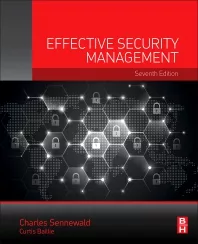Healthcare leadership and employees have different perspectives on workplace violence programs

People typically do not, and should not, expect to be assaulted while on the job, but many in the healthcare field are routinely verbally and physically assaulted. Workplace violence (WPV) is defined by the U.S. Occupational Safety and Health Administration (OSHA) as "violent acts (including physical assaults and threats of assault) directed toward persons at work or on duty.”
Researchers have exhaustively studied elements that should improve the effectiveness of OSHA's healthcare WPV programs. However, there is little research reviewing if the perspectives of employees and senior leadership align with those elements.
This article investigates similarities and differences in perspectives between healthcare employees and senior leaders regarding the WPV program elements specifically around policy, training and staffing. We will review three reports studying U.S. hospital workplace violence programs from nurses’ perspectives.
- Christie published a peer-reviewed article on a study consisting of thirteen hospital emergency department nurses to obtain their viewpoint of an effective workplace violence program.
- Blando et al. surveyed 314 emergency department nurses to get their perspective on hospital security programs and their effectiveness.
- Wray is a female nurse leader at a U.S. hospital and a member of the American Organization of Nurse Executives (AONE). She wrote an article regarding her experiences with workplace violence and the efforts conducted by other agencies such as the American Hospital Association (AHA), Emergency Nurses Association (ENA), and International Association of Healthcare Security and Safety (IAHSS).
Policy perspectives
Policies typically provide a foundation of expectations around a specific topic that senior leaders expect employees to follow. One element of OSHA's WPV program recommends facilities to adopt a zero-tolerance policy.
Wray reports that OSHA, AHA, ENA and AONE support a zero-tolerance policy. She argues that the policy should address the need to report incidents, investigate incidents and provide support to nurses that are victims of violence. Several studies indicate that nurses believe they need a zero-tolerance policy; understand the need to report incidents; and have immediate support after an event. Employees reported they have a short debriefing of events and counseling; however, nurses want longer debriefings and leadership to hold patients accountable and ask them to leave if they are medically stable. As such, nurses reported they fail to comply with the policies because they perceive that management fails to comply with policies as well.
Training Perspectives
Training was also identified as having similar yet contrasting perceptions between employees and senior leadership. Both employees and leadership believe workplace violence training is essential to prevent workplace violence even though it is costly to the company. According to Wray, healthcare organizations spent over $280 million in employee training to provide knowledge and awareness to identify predictive signs of violence and instill a sense of confidence to in emergency management protocols.
Additionally, a nurse study supports training for security and law enforcement; however, "all [nurses] said that the CPI training was ineffective." While the training perspectives between employees and leadership are relatively similar, the difference lies between who should receive training and what type of most beneficial training.
Staffing Perspective
Security and law enforcement presence in healthcare settings also draws contrasting perceptions from employees and leadership. Healthcare leaders continue to focus on preventing violence. In 2016, U.S. healthcare organizations spent $1.1 billion on security, training and drills to respond and prevent workplace violence events from occurring. However, most nurses believe that WPV is an inevitable part of their job. The nurses focus on stopping ongoing events versus leadership, who focus on preventing events from occurring. As such, studies found a high correlation between nurses feeling safe and security or law enforcement being able to respond timely. Blando found “elements of the workplace that make nurses feel safe might not actually result in a lower risk of assault.”
These three studies highlight the similarities and differences of perspectives between healthcare employees and senior leadership. The differences in perspective include:
- Some employees do not follow policy because they perceive leadership as not complying with the policy in holding patients accountable.
- Leadership believes employee training is beneficial to prevent violence; whereas, nurses believe the training is ineffective.
- Nurses report security and law enforcement's quick response makes them feel safe, even though security and law enforcement do not prevent emergencies from occurring.
Further research should be conducted to determine whether addressing the differences in perspective would be effective.
These studies support the idea that some program elements are perceived as more successful in reducing WPV, even though they are not reducing risk. Further research and studies should determine if specific actions to address employee and senior leadership perceptions would change their perception of an effective WPV program.
This article originally ran in Security, a twice-monthly security-focused eNewsletter for security end users, brought to you by Security magazine. Subscribe here.
Looking for a reprint of this article?
From high-res PDFs to custom plaques, order your copy today!







